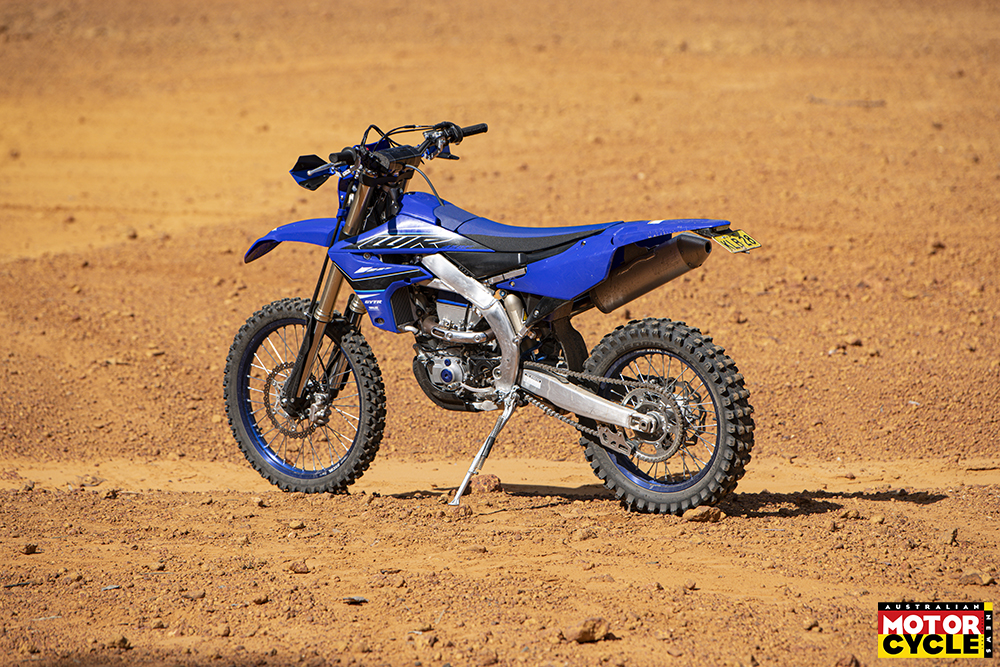Let’s cut to the chase. Unless your name is Josh Green, you probably don’t need a 2021 Yamaha WR450F for fanging about in the bush. A WR250F is plenty enough for dodging trees and logs at thrilling speeds. But much like the Superbike arena, too much power is never enough.
This bike’s a beast. It screams obscenities from its airbox at every touch of the throttle. The rear tyre protests as you roll on the power and when it grips, you better be hanging on. It can be a wild ride, it’s not for the faint hearted or beginners.
You can check out the Yamaha Enduro range here.
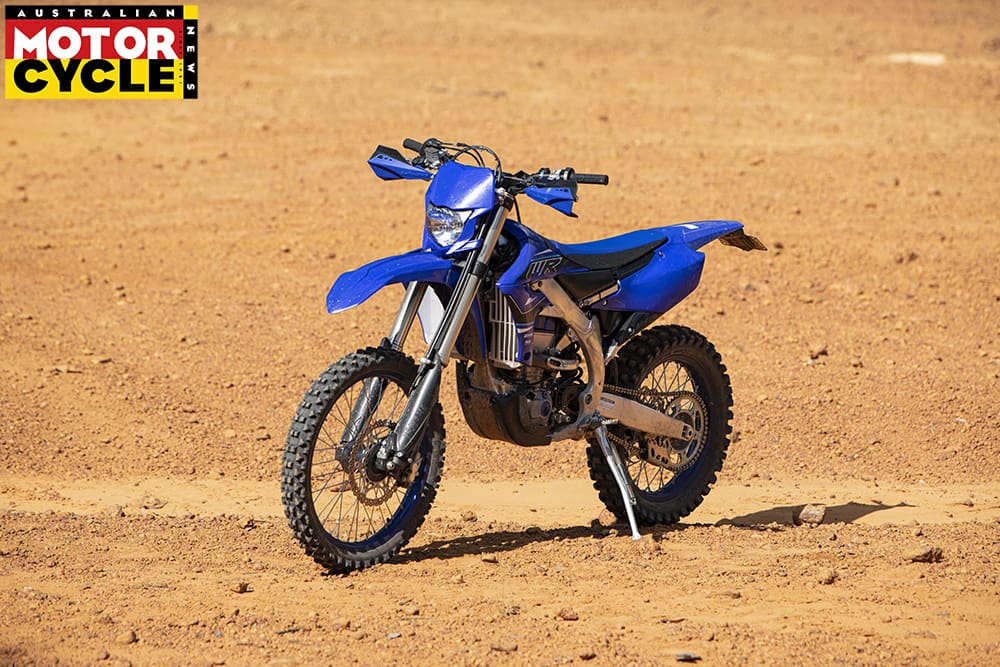
The latest WR450F gains some significant updates carried over from the YZ450F motocross weapon. A new lighter and more powerful engine is fitted and tweaked for a life of enduro riding. I can only image how much of a rocket the YZ is considering the WR is allegedly tamed down.
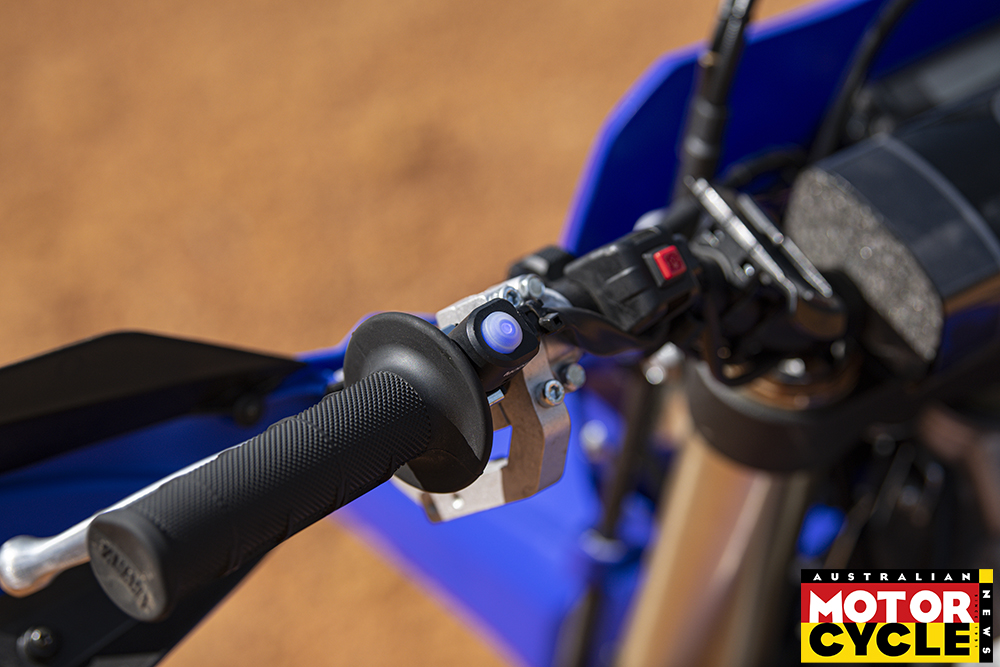
The ruckus that emanates from the intake is loud and intimidating. This is thanks to the airbox being mounted high at the top of the frame keeping it away from water and dust and making way for the fuel tank to run under the seat to both lower the centre of gravity and centralise the mass. The reverse-facing cylinder leans back allowing a direct path from air intake to the inlet manifold. The exhaust exits the rear of the cylinder head and the header pipe (which is straight off the YZ450) wraps around the head to create a perfectly tuned exhaust length while keeping the weight centralised in the frame. The new engine is more compact and the head alone is over 300g lighter than the outgoing WR.
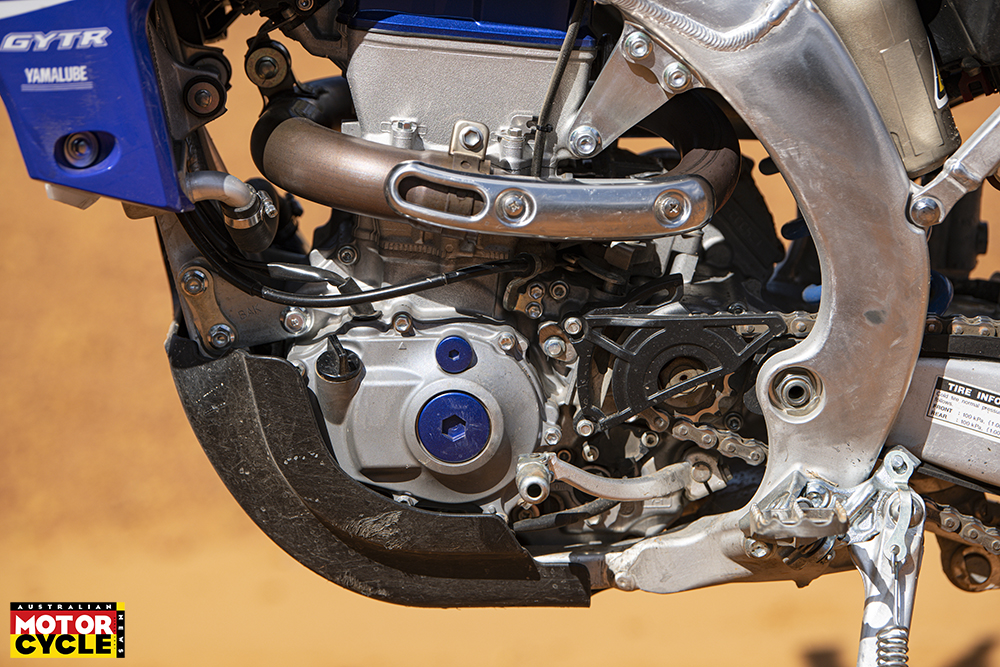
The throttle is light and ultra-sensitive to inputs. Being ham fisted will wear you out in a hurry. There are two power maps to choose from on the fly via the map selector switch on the handlebar. Map number two is a bit softer in the power delivery and I found myself using it mostly in single-track conditions for more predictable throttle response and more traction.
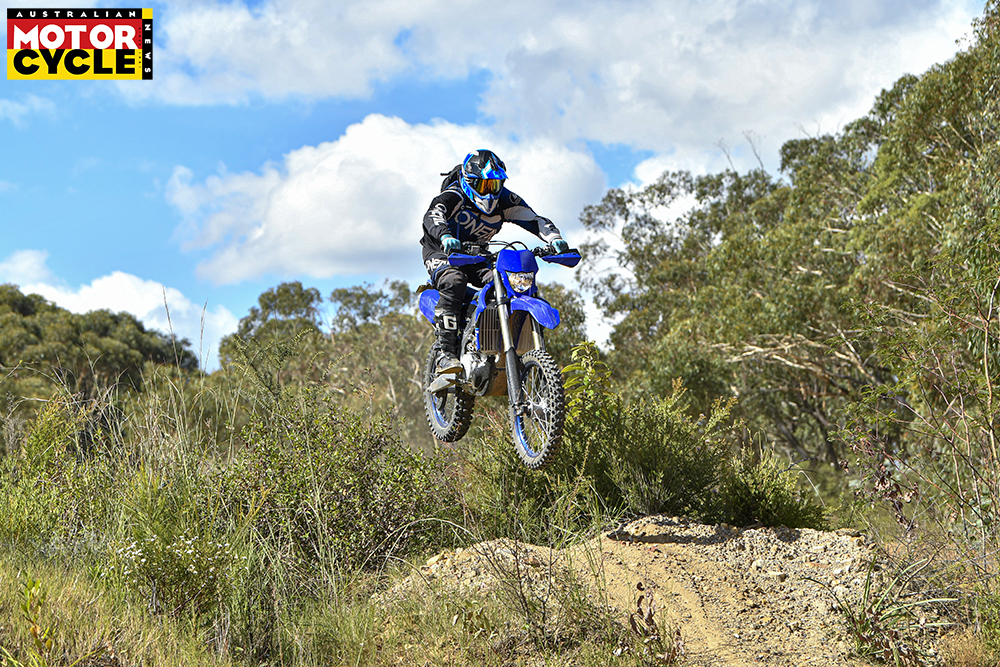
The WR was a good sport in the snotty stuff, but it is not the bike’s strongest suit. When in map one, there is no shortage of power – especially high in the revs. It pulls like a Mack truck down low and piles on the speed at a rapid rate. There’s no shortage of power at the top end either, thanks to that new header pipe.
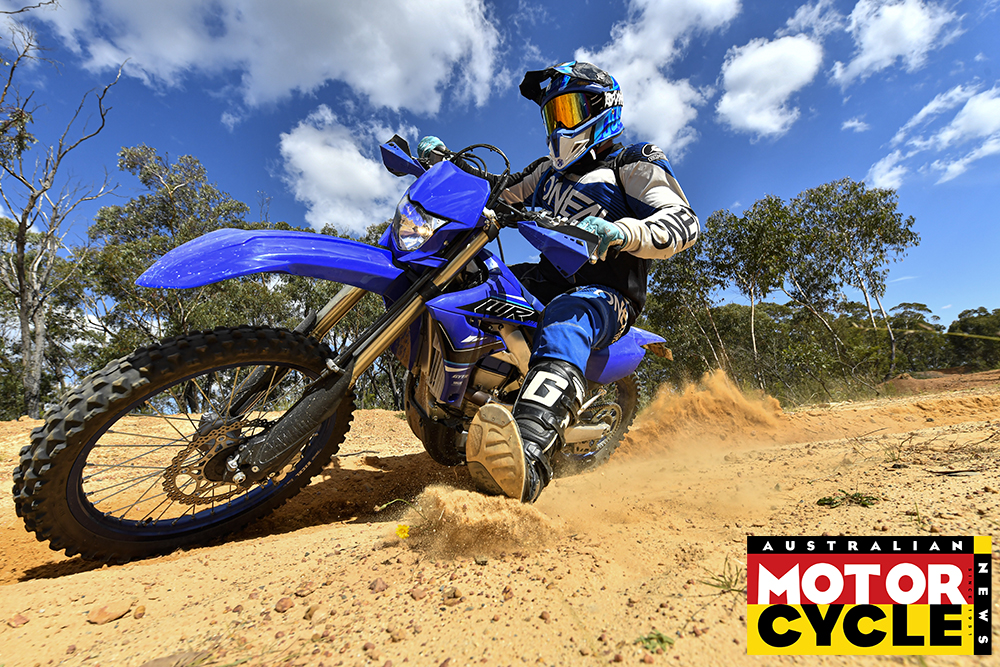
Getting the WR up into the higher gears on open trails is a real treat. It can hang the rear end out at like a boss. It goes right where you point it with little manhandling required. And it’s the happiest in these faster conditions.
Handling is lighter thanks to the new updated frame (also plucked from the YZ) complemented by a few enduro-specific tweaks. Suspension is the highly regarded and sought-after KYB equipment. The twin-chamber coil spring fork is excellent at taking big hits and jumps, it sits high in the stroke and offers plenty of feedback.

That fork can be pushed way harder than I can ride it – it’s lively when riding on rocks, you can feel everything the front wheel touches. Sometimes a bit too much, as it can deflect off larger rocks rather than ride over them. This, however, could be a symptom of tyres and their pressures. I was running the recommended 15psi off the sticker on the swingarm, which is a bit higher than I usually run in the bush.
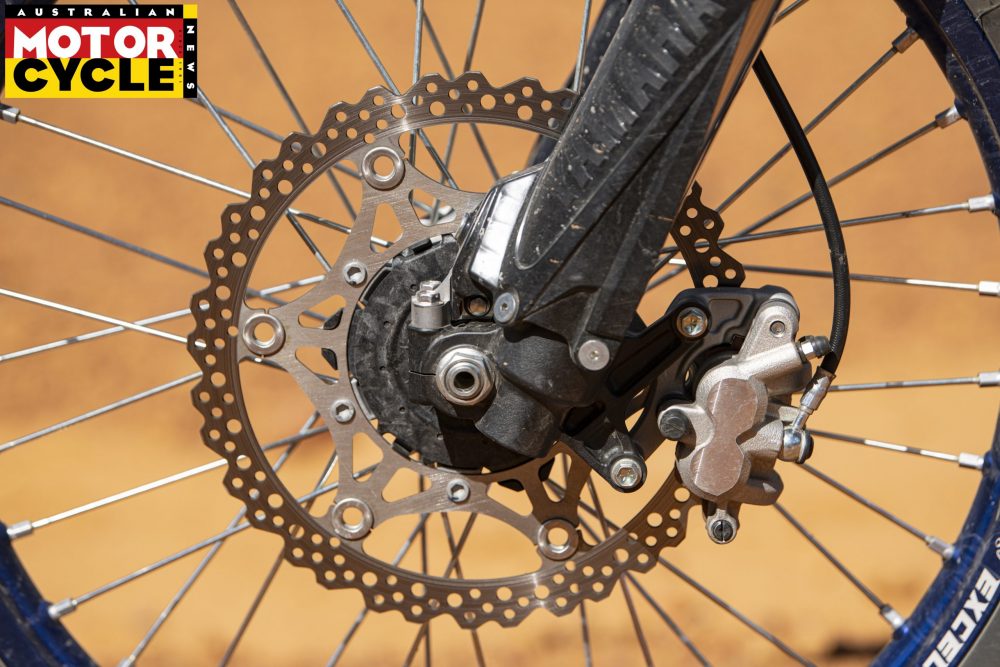
Once again lifted from the race-proven YZ with some enduro settings, the rear KYB shock stays planted at all times and has more adjustments than you can poke a stick at. It is hard to fault. I tip the scales at around 100kg, and I found the suspension setting to be fairly firm still at my speeds. I actually softened the compression and rebound at both ends as I’m not Josh Green.
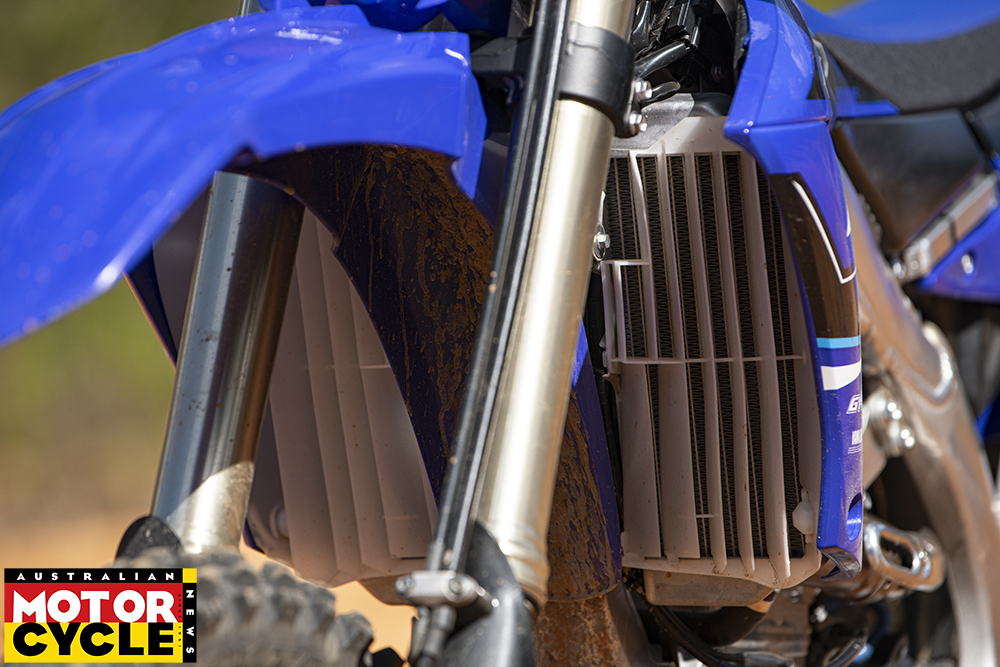
The ergos are very motocross; a wide ’bar mounted fairly low, with a tall and flat seat giving you lots of room to move about the bike. This year Yamaha has moved the ’bar further forward and a touch lower to help with front traction and handling. I rolled the bars forward a bit so I had better reach to the levers while standing up on the pegs.

Up there, the WR feels slim between the knees when you’re up on the grippy footpegs. Gripping the bike between your legs is a bit slippery as your boots rub the frame a bit. I’d be adding some protection there. The slim radiator shrouds allow you to shift your weight around while seated, and the seat itself is firm and grippy so you don’t slide around.
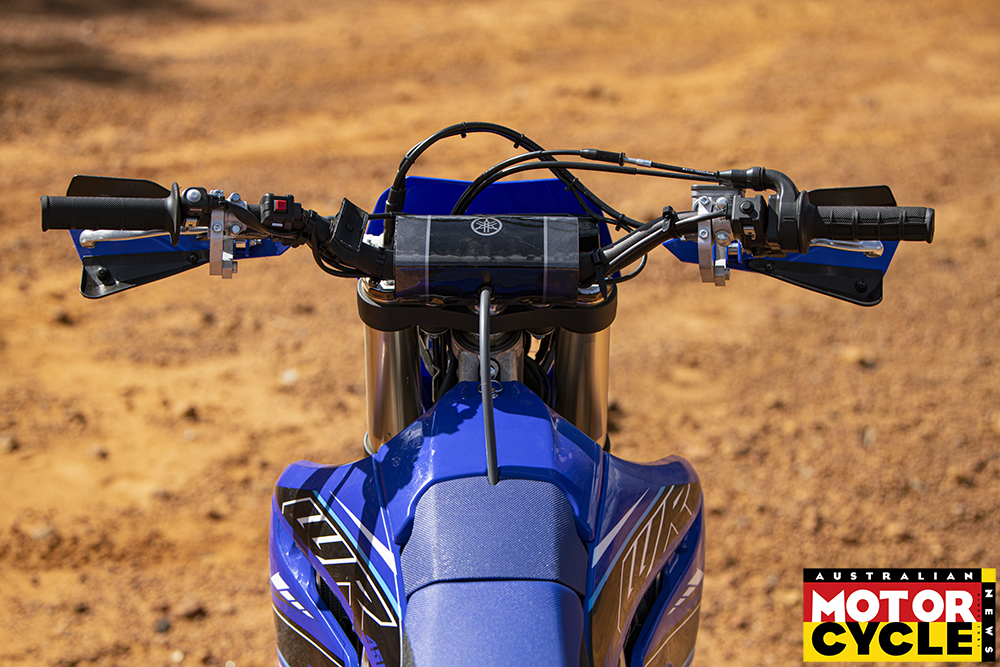
Airflow through the new, more efficient radiators is good, the cooling fan only coming to the party when the going is slow. I expected to feel more heat from the exhaust and radiators but was pleasantly surprised to not find any issue while on the move, even in the slower stuff.
The standard flag-style handguards do their best to give you some protection, but any tree thicker than your thumb will bash them back into your knuckles. The cable clutch action is light and consistent. I use one finger on the clutch during technical stuff and I could pull it in against my fingers and it was enough to prevent stalling. The front brakes have also been given the YZ treatment with increased piston sizes. They are strong and sensitive no matter what your speed, and again, only one finger is required.

There’s a new dash display for 2021, with a very compact and minimalist design. Only the necessities get a showing; speed, a couple of trip meters, hour meter, clock, timer and my favourite function, a nifty fuel-used display. Simply reset it when you fill up and it keeps an accurate count of how much you’ve used. No more peering into a half-empty fuel tank guessing how much juice you’ve got left. I checked it against the fuel bowser and over five litres, it was less than 100ml out.
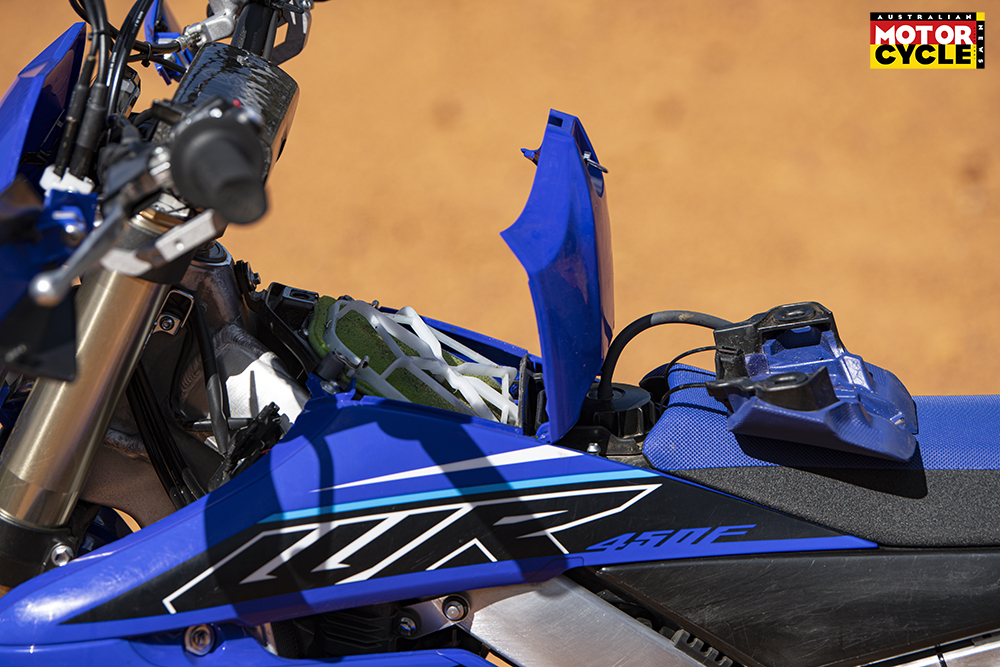
The low-fuel warning light still comes on once you’re down to about two litres of fuel. The 7.9L tank will, in theory, get you about 80km on the trails depending on how you ride. So long distances aren’t ideal unless you carry extra fuel or upgrade the tank to a long-range item. The WR doesn’t have a keyed ignition or a steering lock – it’s a road-registerable racebike, so long distance touring isn’t really in the design scope.
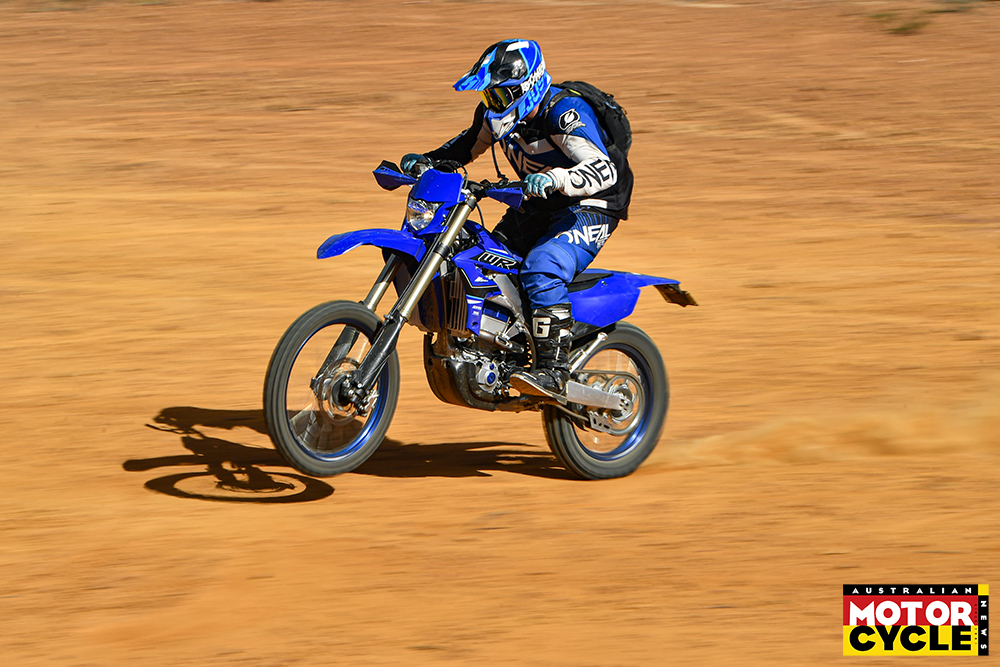
The WR450 weighs in at 119kg ready to ride, which is about six kilograms more than the equivalent European benchmark KTM 450 EXCF. That’s hardly a deal breaker, but every kilo counts in the gnarly stuff. If you start comparing two-stroke enduro bikes, there is larger weight savings to be found, but this is a whole other ball game.
The WR offers great bang for buck at $15,949 ride away. That’s about $500 less than the KTM 450 EXCF and about $1500 more than a Beta RR 430 Enduro. The Yamaha offers quality standard fitment components, a long reputation for reliability and its easily tuned to your specific needs with the free power tuner app.

Each time I head out on a trail ride on a weekend I always see at least one WR450F without fail. The stats don’t lie. The WR is a popular choice for punters and for a damn good reason. Feeling blue might not be such a bad thing.
